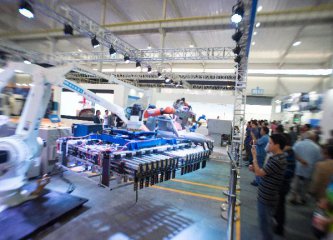
In order to create new drives for economic growth, market-oriented reform on China’s production factors is likely to accelerate in the “13th Five-year Plan” period to promote new technologies, and enhance prospective development of new industries and commercial activities, such as environment protection, medical treatment, finance, providing services and guarantee for the aged and etc.
Transformation to create advantages of human capital
Intensifying the structural reform on supply side is to reinforce a constant drive for economic growth. Such drive is currently at a stage of transformation, and requires the focus on creating new forces to incent the economic growth. To this respect, Suggestions on Formulating 13th Five-year Plan for National Economy and Social Development by the Central Committee of the Communist Party of China (hereinafter “the Suggestions”) firstly proposes to “optimize factors allocation, including labor force, capital, land, technology, management and etc.”
Teng Tai, director of Wanbo Economic Research Institute, pointed out that prices of China’s production factors, such as land, capital, labor, technology and management, have soared for over ten years, which greatly pressed on enterprises together with costs of taxation and administration. Zhang Ping, vice director of Chinese Academy of Social Sciences (CASS), indicated that demographic dividend is now exhausting with slowing reproduction of physical capital, and factors supporting the new normal status of economy also correspondingly change; under such situation, reproduction of physical capital should be gradually replaced by that of human capital.
It requires a series of reform on education and scientific research to speed up the formation of new advantages in human capital, but reforms on household registration system and administrative institutions may be more effective and efficient. The executive meeting of the State Council held on Nov. 11 determined to accelerate household registration system reform to incent consumptions in housing, household appliances and etc. Based on the measurement and calculation by Cai Fang, an expert on “13th Five-year Plan” and also the CASS vice director, fully-successful household registration system reform is likely to improve the potential growth of China’s economy by one to two percentage points, under the background of slowing-down urbanization in the future.
This executive meeting also determined to “speed up classification reform on public institutions of education, health care, culture and so on, and implement the corporatization for some institutions, if necessary.” The following Guidelines on Accelerating Development of Livelihood Service Industries and Enhancing Structural Upgrading of Consumption by General Office of the State Council (hereinafter “the Guidelines”) proposed to positively and stably promote the classification reform on public institutions of education, health care, culture and physical education.
Reforms on other factors will also be speeded up and promoted. Xu Lin, head of Planning Department under National Development and Reform Commission, stated that the Suggestions highlights the innovations for structural reform on supply side, possibly focusing on fundamental reforms on institutional mechanisms in the future, such as reforms on property rights system, state-owned enterprises, finance, fiscal and taxation system and etc.
Upgrading to enhance new industries and commercial activities
Production factors reform lays the foundation to create new drives for development. But further jobs should be implemented to push the industrial structures stepping towards medium and high end, and speed up transformation of the driving forces: one is to incent the vigor for innovation and business start-up; second is to release new demands to create new supplies.
Capitalizing on the “twin engines”, the Chinese government intends to promote economic transformation and upgrading, and cultivate flourish new technologies, new industries and new commercial activities. At present, new industries and new commercial activities are likely to come into being in broad environment-protection concept. Wei Jie, head of Chinese economic research center at Tsinghua University, believes that eight categories of strategic emerging industries may become the backbones of China in the future. And half of them are related with environment protection, including new energy, advanced materials, energy conservation and environment protection, as well as new energy vehicles.
The proposal also suggested the promotion of new energy car. And in respect of new materials, graphene is worth mention. Zhang Jingan, chair of China society of science and technology reform, indicated that China’s manufacturing industry need to be upgraded, and the industrialization of graphene, if completed, could substantially elevate China’s manufacturing level.
Service industry is another “rich mine”. A new change is that in addition to financial service industry which has been the focus, the government has begun to emphasize on the development of consumer service industry. The Guidelines has referred to 10 aspects of residents and household services. Observed from increment perspective, healthcare service and service for the senior are paid more attention. Executive meeting of the State Council convened on Nov. 11 determined to push forward the combination of healthcare service and service for the senior.
Balance: moderately expand total demand
In order to enhance impetus for sustainable economic growth, China should not only deepen structural reform on the supply side, but also moderately expand total demand. As is known to all, consumption, investment and export are all key factors in promoting economic growth.
The reason is, new demands also contribute to industrial transformation and upgrading. In the view of Liu Shijin, supply and demand are two sides that should be balanced. The ultimate goal of supply side reform is to create demands, and solve the problems on the demand side. New demands brought by reform of the supply side are more reliable, real and sustainable.
Recently, the state council has issued guidelines on fostering new impetus for supply by actively promoting new forms of consumption, which has systematically elaborated the overall thinking of providing power for supply through new forms of consumption, and selected six sectors, including service, information, green, fashion, rural and quality consumption as major areas and directions of new consumptions.
Seeking new investment demand is equally important. The proposal promoted to deepen investment and financing system reform, optimize investment culture and increase effective investment, which contribute to easing downside pressure, as well as facilitating the potential and resilience of the economy.
In terms of export, the focuses during the 13th Five-year Plan period will be reinforcing the combination of outbound investment and export expansion, and striving to foster new advantages centralized by technology, standard, brand, quality and service. Specifically, China will implement the strategy of both exporting and importing high quality products and services and strengthen international cooperation on productive capacity, equipment manufacturing and more.
As what Xu Lin said, the proposal did not interpret the “troika” of economic growth simply from stimulating investment, consumption and export. Instead, it proposed to develop the three engines from the perspective of reform and innovation. “Since the issue of demand is no longer what it was, we must satisfy and create new forms of consumption through reform and innovation, improve the efficiency of investment and increase efficient investment through reforming investment and financing system, and enhance the competitiveness of export through improving quality, rather than increase export through currency depreciation or providing more export subsidies. The change of the statement is in line with the viewpoint of supply-side economics to explore and foster new growth impetuses from the supply side,” said Xu Lin.
Translated by Jelly Yi & Adam Zhang
























Latest comments